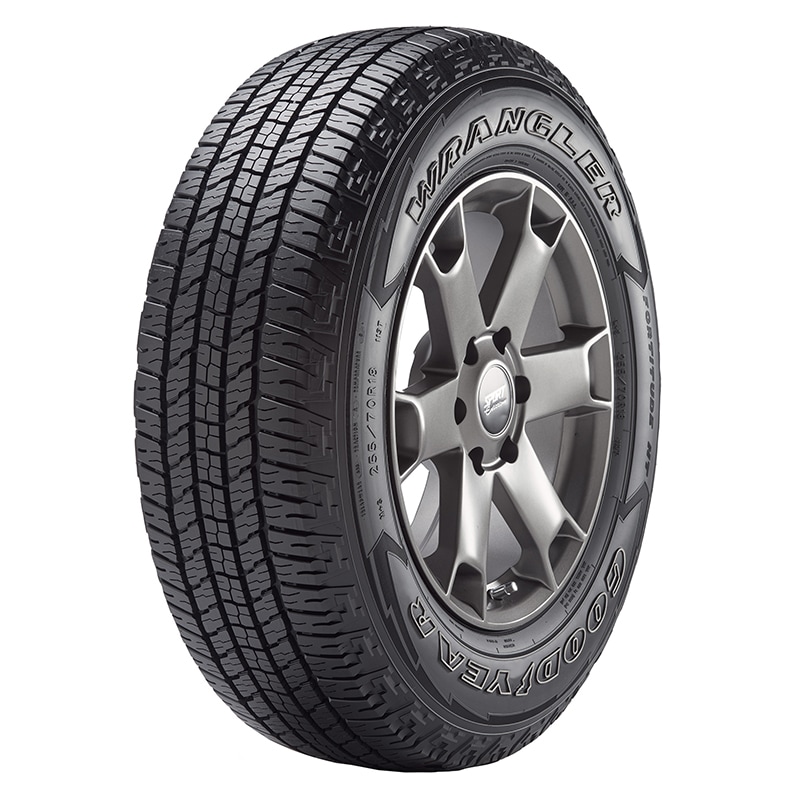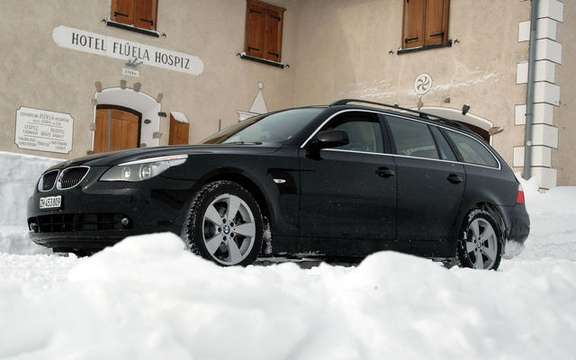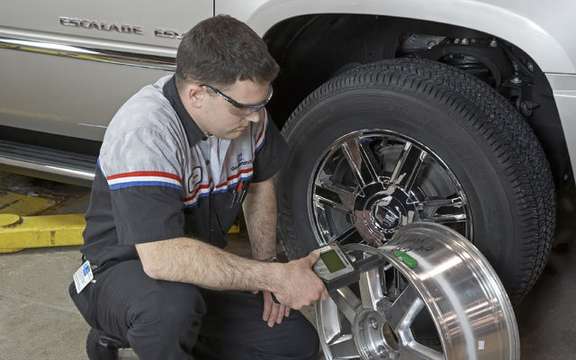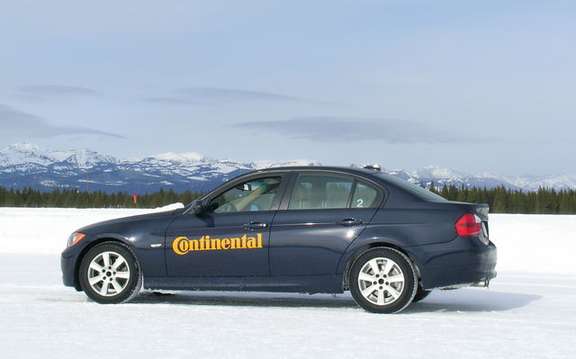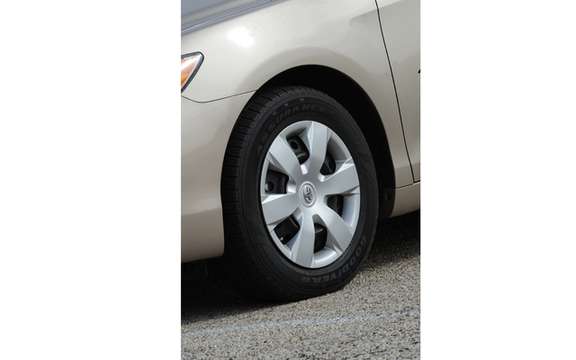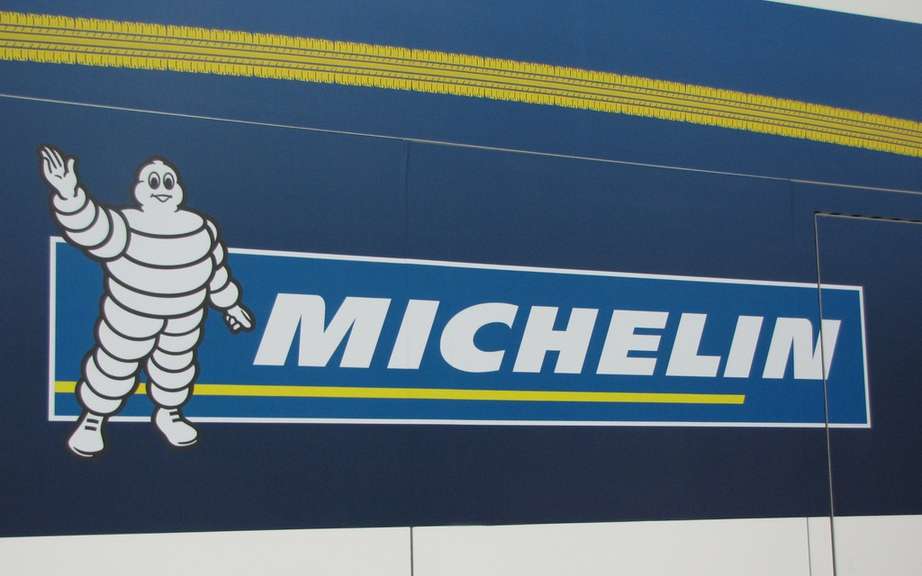Tires, the first part
Tires
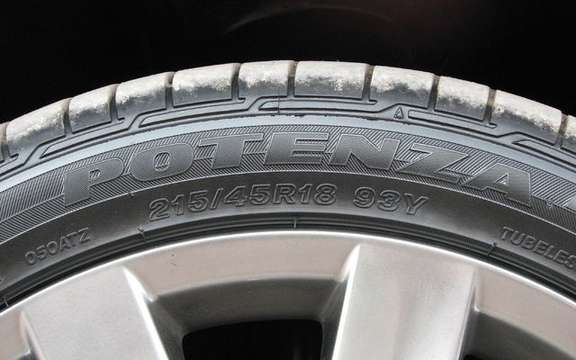
Tires, more
When it comes time to purchase new tires, it is often difficult to choose from the range of models that are available to us. There are already several tire manufacturer in North America that offer different designs, and this was enough to supply the demand. However, for some time, we are bombarded with international brands, often from Europe and Asia, which promise us a remarkable efficiency in all seasons and specially useful for us in winter. So how do the light on all these products to make a good choice when we purchase? Few explanations that follow are not intended to be exhaustive but will surely help navigate.
Goodyear, Dunlop and Michelin
Contrary to what one might think, this is not Goodyear patented the pneumatic but Robert William Thomson in Scotland in 1822. He obtained a French patent for his tire in 1846 and the American version 1847. Its tire consisted of a hollow inflatable rubber tube surrounding the wheel and wood, in the manner of a belt. A strip of stiff leather hide then came the tube and was firmly fixed on the whole perimeter of the wheel. Several years passed before John Boyd Dunlop created the first commercial bicycle tire in 1888. As for Charles Goodyear, he was known for having invented vulcanization in 1843, a process still used widely today in the preparation of natural rubber to make tires, shoe soles, hockey pucks and even bowling balls.
This is Michelin in 1895 that introduced the rubber tire on car production but Goodyear gets the patent for tubeless tire in 1903. Then came the invention of the tire cord, a rope strengthens the tire grooves , long duration of the tire, of the synthetic tire, radial tire, a nylon, a polyester, with glass fiber and the polymer. All these variants, more or less successful at the time of invention, led the department of transportation of the American government create a classification standard tires. This nomenclature is now recognized worldwide and allows some control over tire manufacturers in addition to protect and inform the public in general about the types of tires available on the market. It's nomenclature is commonly known that the DOT.
DOT (Department of Transportation)
We can therefore differentiate tires by marking that is on the tire sidewall. For example an indication P215/65 R 16 91 H M + S, we can make the following deductions:
P indicates that this is an intended passenger vehicles (passenger) tire. We also found LT tires equipping the light trucks (Light Truck).
215 is the inflated tire width, measured from one sidewall to the other in millimeters. This is not the width of the tread which is usually smaller.
65 is the height of the sidewall compared to the width of the tire and expressed as a percentage. Here, 65% of 215 meaning 139, 75 mm. However, on most tires, the greater the number, the higher the slope is large. A performance car often present a low value, eg 35 for a Lamborghini.
R indicates the tire is of radial type. Other letters have different types including B for a building "bias" and D for diagonal construction.
16 represents the diameter of the rim in inches.
91 is an index of carrying capacity. On cars, this is the figure most frequently observed. In this case, 91 is equivalent to a capacity of 615 kg.
H indicates the speed rating of the tire. This is the maximum speed at which a tire can be submitted without endangering the lives of the occupants of the vehicle. One side tire Q is usually a less efficient 100 km / h rating a tire W. Noise and vibration are often better controls on tires presenting a better rating.
M = 130 km / h
N = 140 km / h
P = 150 km / h
Q = 160 km / h
R = 170 km / h
S = 180 km / h
T = 190 km / h
U = 200 km / h
H = 210 km / h
V = 240 km / h
W = 270 km / h
Y = 300 km / h
Dimensions of Z and ZR are reference has tires that can run in excess of 240 km / h without speed limit contrary to theoretical dimensions W and Y which present speed limits. As for winter tires, they are usually classes Q and S with some exceptions.
M + S indicates that the tire is either a four-season or winter tires. In other cases, we can also see on the side of a pictogram representing a mountain or flakes.
Marquees performance
Also on the sidewall of the tire is the data on the life span of the tire, its effectiveness in traction and temperature. We can therefore read the word "Treadwear" and a figure that usually ranges between 100 and 500. This figure compares the tires them and does not mean anything in itself. It must be compared to the measurement etalon is 100. This is established by the department of transport and the United States means that a car with this type of tire travel a distance of about 45 000 km before be completely use. A tire graded 200 so last 2 times longer, or 90 000 km. Indices below 200, whereas those are poor above 400 are very good. Tires, over 400 are rare and very expensive. These are typically high performance tire whose tread is very soft, which allows for maximum adherence. Are found, thereafter, two steps, and a traction of the other temperature. This tension gives an appreciation of the effectiveness of braking on wet pave. Ratings are AA, A, B or C, AA being the best. The index of temperature presents grades A, B or C, C being the worst. This index compares the tires as to their generation of heat and makes them dissipate.
Manufacturing
Some other markings on the tire can also inform us about its features. The words "tubeless" indicates the tire has no air chamber. The date of manufacture is also present on the tire. It then sees four digits, the first two showing the week of manufacture while the last two represent the year. For example, 1702 is a tire factory at the 17th week of the year 2002. When there are 3 digits, it means that the tire was manufactured before 2000. If a triangle is present before these three figures is that it is the decade 1990 and if there is none, the decade 1980. 259 therefore corresponds to a tire manufactures the 25th week of 1989. It is very important to check this figure because even if a tire does not roll, it loses effectiveness over time. Over time, a dry tire and then present cracks and cracks at the junction of the sole and the side. Usually selected tires having been built during the last two years.
In the second part of our article about the tires, it will discuss the different types of tire construction, their effectiveness, valves and inflation.


